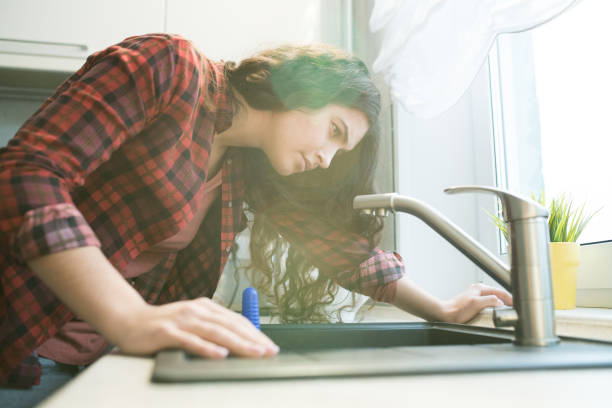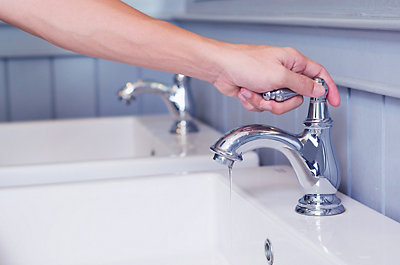Learning the Relevance of Dealing with a Broken Faucet
Learning the Relevance of Dealing with a Broken Faucet
Blog Article
Here below you will find some dependable information and facts all about Should I Repair or Replace a Leaky Faucet?.

Trickling taps might look like a minor hassle, however their effect exceeds just the inconvenience of the sound. From wasting water to sustaining unneeded economic expenses and health and wellness risks, ignoring a dripping tap can bring about different consequences. In this write-up, we'll delve into why it's essential to address this usual family problem quickly and effectively.
Wastage of Water
Ecological Effect
Dripping taps add substantially to water wastefulness. According to the Environmental Protection Agency (EPA), a solitary faucet dripping at one drip per secondly can throw away more than 3,000 gallons of water per year. This not only strains water sources however also impacts environments and wildlife depending on them.
Step-by-Step Guide to Fixing a Dripping Tap
Tools Called for
Before trying to take care of a dripping tap, gather the needed tools, consisting of a flexible wrench, screwdrivers, substitute components (such as washing machines or cartridges), and plumber's tape.
Common Faucet Issues and Their Solutions
Identify the type of faucet and the particular issue creating the drip. Common troubles include worn-out washing machines, corroded shutoff seats, or defective O-rings. Describe producer guidelines or on-line tutorials for step-by-step support on repair work.
Financial Expenses
Increased Water Expenses
Past the environmental effect, dripping taps can inflate water expenses substantially. The gathered waste gradually translates into greater utility expenses, which can have been avoided with prompt repair work.
Potential Building Damage
Furthermore, long term trickling can result in harm to components and surface areas bordering the faucet. Water build-up can create discoloration, corrosion, and even structural problems if left neglected, causing additional repair work expenses.
Wellness Concerns
Mold and Mildew Development
The consistent visibility of moisture from a dripping faucet creates a suitable setting for mold and mildew and mold development. These fungis not just compromise indoor air quality but also pose health risks, especially for individuals with breathing conditions or allergies.
Waterborne Diseases
Stationary water in trickling faucets can end up being a breeding place for microorganisms and various other pathogens, increasing the risk of waterborne diseases. Impurities such as Legionella microorganisms grow in stationary water, possibly causing serious ailments when consumed or breathed in.
Do it yourself vs. Specialist Repair service
Benefits and drawbacks of Do It Yourself Repair Work
While some may try to take care of a leaking faucet themselves, DIY repairs come with their very own set of challenges. Without proper expertise and tools, DIY efforts can worsen the problem or lead to insufficient repairs, extending the trouble.
Benefits of Working With an Expert Plumber
Hiring a specialist plumber makes sure that the underlying cause of the trickling tap is attended to efficiently. Plumbers possess the proficiency and tools to identify and fix faucet concerns effectively, conserving time and reducing the threat of additional damages.
Environmental Duty
Private Payment to Conservation
Taking duty for repairing trickling faucets lines up with broader efforts towards water conservation and ecological sustainability. Every individual's actions jointly make a substantial effect on preserving valuable sources.
Lasting Living Practices
By prioritizing timely repairs and embracing water-saving behaviors, individuals contribute to lasting living techniques that profit both present and future generations.
Safety nets
Regular Maintenance Tips
To avoid trickling taps, perform routine upkeep such as cleansing aerators, inspecting for leaks, and changing damaged components without delay. Furthermore, take into consideration mounting water-saving devices or upgrading to much more effective components.
Relevance of Prompt Repairs
Dealing with trickling taps as quickly as they're noticed avoids more water wastefulness and possible damages, inevitably conserving both water and cash in the future.
Influence On Home Value
Understanding of Well-Maintained Building
Keeping a residential or commercial property in good condition, including resolving upkeep problems like leaking taps, improves its perceived value and desirability amongst possible customers or occupants.
Influence on Resale Value
Residences with well-maintained plumbing fixtures, including faucets, command higher resale worths in the property market. Resolving leaking faucets can contribute to a favorable perception during home assessments and arrangements.
Final thought
Dealing with a dripping tap exceeds mere ease; it's a crucial action toward saving water, decreasing economic expenses, and protecting health and residential or commercial property. Whether through do it yourself repair work or specialist help, taking action to deal with dripping taps is a small yet impactful means to promote liable stewardship of resources and add to a healthier, a lot more sustainable future.
How to Fix a Dripping or Leaky Faucet
A leaking faucet is one of the most common problems that homeowners encounter, but it being commonplace doesn’t make it any less annoying. The constant drip drip drip of a leaking bathtub faucet, showerhead, or sink tap can disturb your home’s serenity. Left neglected, a dripping faucet can also result in higher water bills and discoloration or mold growth in your sink or plumbing fixtures.
Fortunately, you don’t have to be a trained plumber to know how to stop a dripping faucet. With some basic tools, replacement parts, and a little patience, leaky faucet repair is a breeze. In this article, we’ll explain what causes dripping faucets and how you can fix them.
What Causes a Leaking Faucet?
Kitchen and bathroom faucets come in all manner of designs, but most involve some combination of valves, O-rings, seals, and washers. The O-ring is usually the weakest link, but any one of these pieces can wear down over time. Heat, moisture, temperature fluctuations, minerals, mold, and movement can contribute to warping and corrosion, breaking the watertight seal. This just comes with the territory of being a homeowner. Everything is always subject to wear and tear, and some component parts of your appliances and fixtures need to be replaced on occasion. At least replacement O-rings are cheap!
More rarely, dripping faucets can be a symptom of excessively high water pressure. Were this the case in your home, you would probably notice that the leak is not isolated to one faucet. Water pressure issues are harder to resolve on your own. We recommend contacting a professional plumber if you suspect your water pressure is too high.
How to Fix a Dripping Faucet
Pipe wrench or monkey wrench Allen wrench set Screwdrivers Old towel or rag Shut off the water.
Before you do anything, you need to turn off the water to keep from drenching your kitchen or bathroom. You should find a valve under the sink and against the wall. Once you’ve turned this valve, try turning the faucet on to confirm that the water source has been cut off.
If you can’t locate your local valve for the faucet you’re working on, you can always shut off the water to the house at the main valve. Of course, this will prohibit anyone from using the sinks, showers, or toilets while you’re working on the faucet that’s giving you trouble.
Plug or block the drain.
You’ll be disassembling the faucet and removing some small bits of hardware. Plug the drain with a stopper or rag to avoid the possibility of a small screw falling into your P-trap.
Take apart the faucet assembly.
There are several varieties of kitchen and bathroom faucets, each with its own manner of assembly. For detailed instructions on how to disassemble your faucet, you can refer to the fixture’s manual or contact the manufacturer. If you know whether you have a ball, disc, cartridge, or compression faucet, you can find detailed schematics online.
In general, you need to begin by removing the faucet handles. You might notice a small screw that you’ll need to remove with a screwdriver or Allen wrench. If you don’t see any visible securing hardware, it’s likely hidden under a decorative cap that can be unscrewed or popped off with flathead screwdriver.
Remove each piece methodically, consulting a schematic when necessary. Take notes or arrange the pieces in such a way to make it easier to correctly reassemble the faucet later.
Remove the cartridge.
Once you’ve removed the handles and securing hardware, you should be able to remove the valve cartridge or stem. Some cartridges will slide right out. Other faucet models will require you to loosen a nut with a pipe wrench before you can remove the valve stem.
Examine the exposed hardware.
With the cartridge or stem removed, inspect the component parts. Check the rubber O-rings for wear and tear. Also examine the seat washer for corrosion or other damage. These pieces are usually the responsible parties for a dripping faucet, but it’s worth inspecting the other component parts while you have the faucet disassembled.
Find replacement parts.
Once you’ve identified which faucet component has failed, find an identical replacement. Your local hardware store should have O-rings, seat washers, and other standard components in stock. If you have a luxury or uncommon faucet, you may have to contact the manufacturer for a replacement part.
It’s a good idea to take your old parts with you to the hardware store so you can compare them with the store’s inventory and be sure you’re purchasing the correct replacement.
Reassemble the faucet.
With your new parts in hand, reconstruct the faucet and handles. Don’t be tempted to overtighten screws or nuts. You might think this could create a better seal, but it can instead damage or bend a delicate part of the assembly and create a new problem for you.
Turn on the water and test the faucet.
The only thing left to do is test your work. Unplug the sink, turn the water back on, and try the faucet. Congratulate yourself on a job well done!
https://www.libertyhomeguard.com/how-to-fix-a-dripping-or-leaky-faucet/

I am very fascinated by Why It's Important to Fix Leaky Faucets and I hope you appreciated the new blog post. Enjoyed reading our blog posting? Please share it. Let another person discover it. Thanks a bunch for your time. Return soon.
Report this page